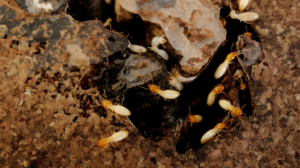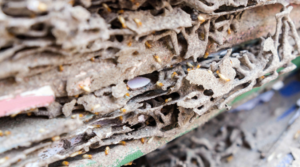Silverfish, those small, silvery-gray insects often found in our homes, can be more than just a nuisance. Understanding how to identify them is the first step in managing their presence. This article delves into the characteristics of silverfish and how to recognize their presence in your home.
What are Silverfish?
Silverfish (Lepisma saccharina) are small, wingless insects known for their distinctive fish-like shape and movements. They are typically ½ to 1 inch long and are covered in silvery scales that give them a metallic sheen. These nocturnal creatures prefer dark, moist environments and are often found in bathrooms, basements, and kitchens.
Identifying Features of Silverfish
Appearance: Silverfish have a unique, carrot-shaped body with a silvery-gray color and a metallic sheen. They possess two long antennae at the front and three long bristles at the rear.
Habitat: They thrive in humid environments and are often found in damp areas of the home such as bathrooms, basements, and under sinks.
Diet: Silverfish feed on carbohydrates, particularly sugars and starches. Common household items like book glue, wallpaper paste, and linens can attract them.
Signs of a Silverfish Infestation
Damage: Look for irregular feeding marks, holes, or notches on wallpaper, books, and fabrics. Silverfish can also leave yellow stains, especially on linens.
Droppings: Silverfish droppings are small, black, and pepper-like, often found in areas where they feed or nest.
Sightings: Spotting a silverfish at night can be a sign of infestation, as they are nocturnal and avoid light.
Prevention Tips
Reduce Humidity: Use dehumidifiers and ensure good ventilation in damp areas of your home.
Seal Entry Points: Repair cracks and crevices in walls, floors, and around pipes to prevent their entry.
Proper Storage: Store food in airtight containers and keep dry goods in well-sealed cabinets.
Conclusion
Identifying a silverfish infestation is the first step towards a pest-free home. By recognizing their appearance, understanding their habitat and diet, and being aware of the signs of infestation, you can take proactive measures to control and prevent these elusive pests. Remember, maintaining a dry and clean environment is key to keeping silverfish at bay.









